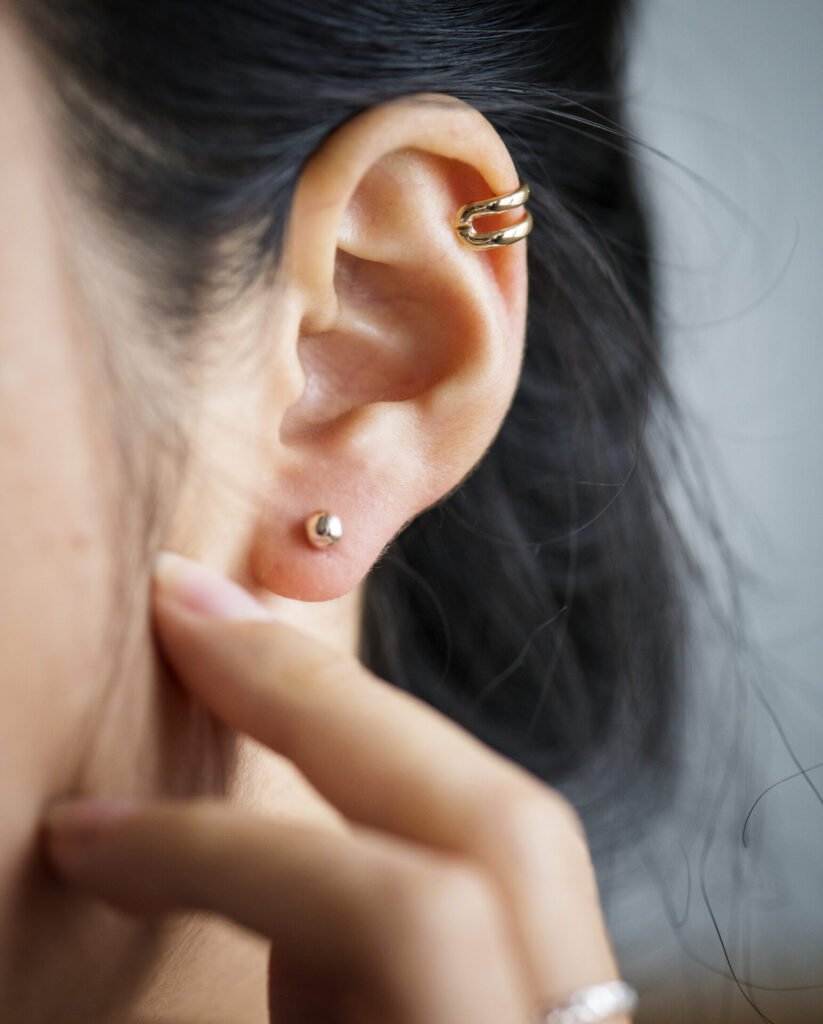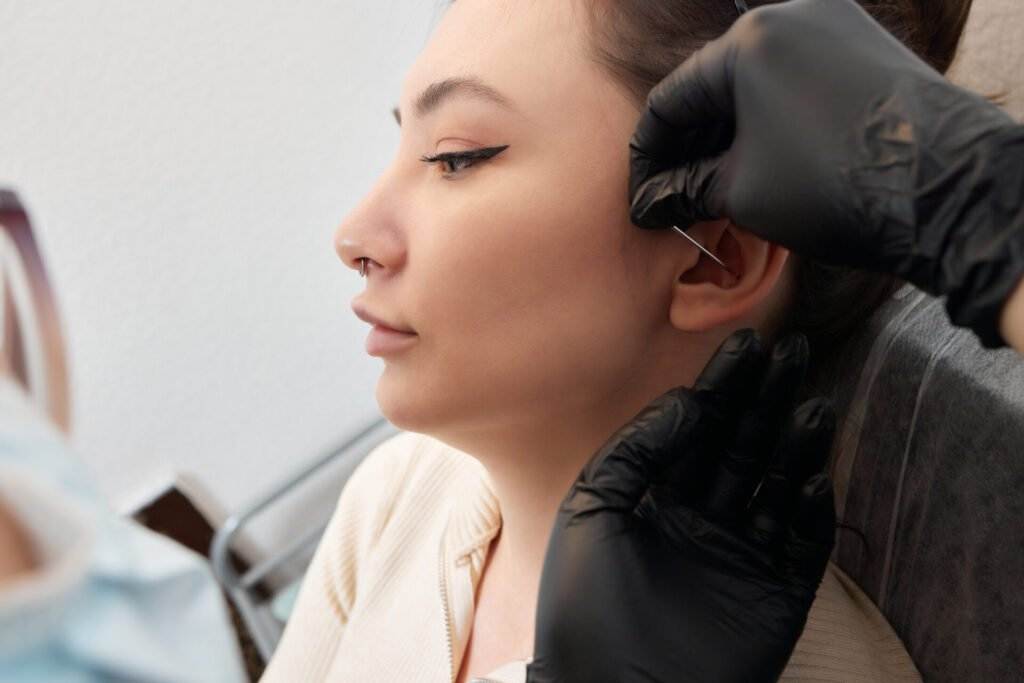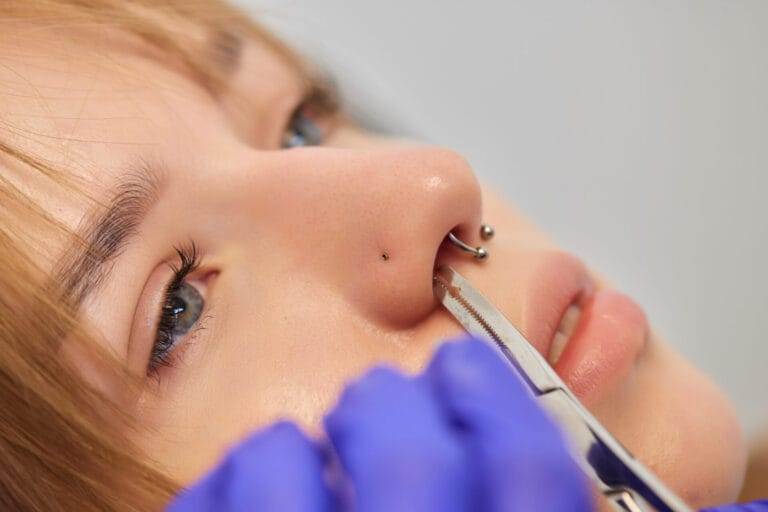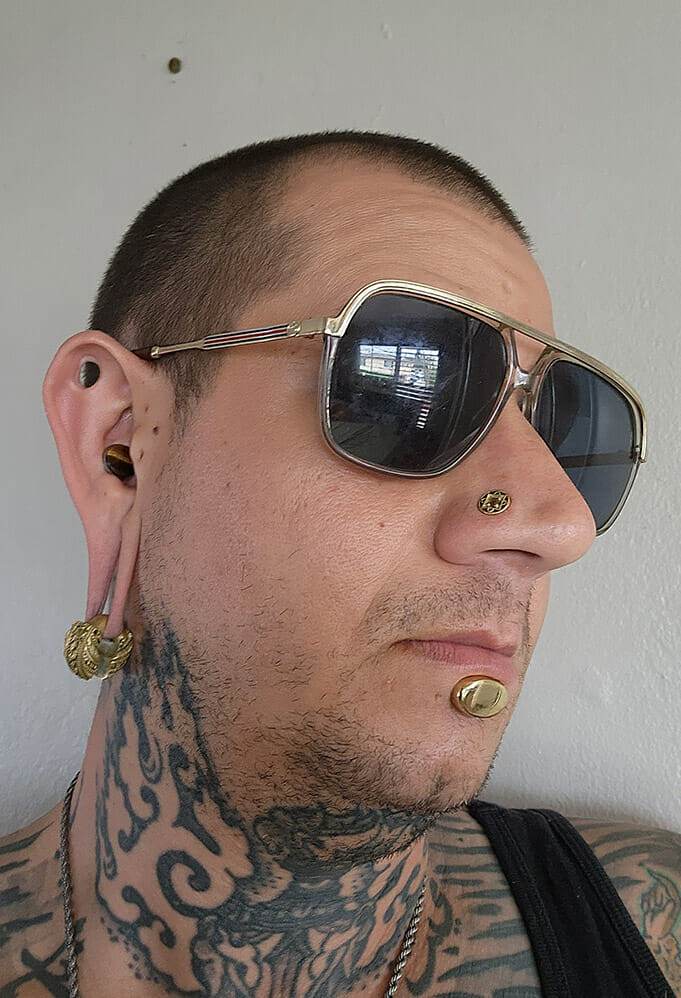Introduction
Ear piercings have a long and storied history that spans various cultures and time periods. They serve not only as a form of personal expression but have also held cultural significance throughout humanity’s past.
History of Ear Piercings

The practice of ear piercing dates back thousands of years, with evidence of this age-old custom found in various ancient civilizations. Here’s a brief look at its historical journey:
- Ancient Cultures: Many cultures, including the Egyptians and the Aztecs, adorned their ears with jewelry made from precious metals and stones. Ear piercings were often seen as a rite of passage and were even linked to spiritual or religious beliefs.
- Historical Significance: In ancient Greece, soldiers would pierce their ears to signify bravery, while in Africa, ear piercings were used to denote tribal affiliation and social status.
- Fashion Development: Over the centuries, ear piercings transformed from purely functional adornment to a trendy fashion statement, especially during the Renaissance when both genders began to experiment with earring styles.
As we moved into the 20th century, ear piercings gained a more mainstream status, particularly in Western societies. The introduction of various piercing techniques and materials led to an explosion of popularity.
Rise of Trendy Ear Piercings
In recent years, ear piercings have enjoyed a resurgence in popularity, especially among younger generations. This trend is characterized by its diverse styles and creative approaches. Various factors have contributed to this rise:
- Influence of Social Media: Platforms like Instagram and Pinterest have played a pivotal role in popularizing trendy ear piercing styles. Influencers and celebrities showcasing multiple piercing configurations have inspired many to explore their own ear adornment.
- Personal Expression: Today, piercings are seen as unique expressions of individuality. People often mix and match styles, turning their ears into personal canvases that reflect their tastes and moods.
- Variety of Styles: The modern ear piercing trend isn’t limited to the traditional lobe piercing. Options such as helix, rook, and daith piercings allow individuals to curate personalized, eye-catching looks.
As the popularity of ear piercings continues to grow, it is essential to understand the different types available, the procedures involved, and the best practices for care and maintenance. This knowledge not only enhances one’s aesthetic choices but also ensures safety and longevity for these cherished adornments.
Types of Ear Piercings

As ear piercings evolve in style and popularity, two standout types—the rook and the daith—have captured significant attention. These unique piercings add character and can enhance personal aesthetics. Let’s delve into the details!
Rook Piercing
The rook piercing is located in the upper ear, specifically through the fold of cartilage above the tragus, offering a chic and appealing look. Here’s what you need to know about it.
1. Procedure
Receiving a rook piercing involves a straightforward process, typically executed by a professional. Here’s an overview:
- Consultation: Discuss your desires and any concerns with the piercer. They will provide you with information about the procedure and aftercare.
- Preparation: The area is cleaned to minimize infection risk.
- Marking: The piercer marks the entry and exit points on the cartilage to ensure precision.
- Piercing: Using a sterilized needle, the piercer creates the hole swiftly and efficiently, followed by the insertion of jewelry, usually a small hoop or barbell.
The sensation can feel like a quick pinch, often noted as more intense than lobe piercings due to the cartilage being pierced.
2. Aftercare Tips
Proper aftercare is crucial for rook piercings, especially since cartilage piercings can be prone to infections. Here are some essential tips:
- Cleaning: Clean the area daily with saline solution or a non-alcoholic antiseptic.
- Avoid Touching: Minimize touching the piercing to avoid introducing bacteria.
- Jewelry: Wear only recommended materials, such as surgical steel or titanium, to prevent irritation.
- Consult Professionals: If any unusual symptoms like excessive swelling or pus occur, consult with a professional piercer.
Daith Piercing
Another trendy option is the daith piercing, which passes through the innermost fold of the ear cartilage, known as the daith.
1. Benefits
Apart from aesthetic appeal, many people are drawn to daith piercings for various reasons:
- Potential Migraine Relief: Anecdotal evidence suggests that daith piercings may help alleviate migraines, similar to acupuncture.
- Stylish Aesthetic: It offers a unique and fashionable look that can be complemented by various earring styles.
2. Pain Level
When considering a daith piercing, pain is often a concern:
- Pain Sensation: The pain level is generally compared to that of a rook piercing—like a sharp pinch and often brief.
- Healing Time: It’s important to note that healing can take longer due to the location, ranging from 3 to 6 months, requiring patience and proper care.
Both rook and daith piercings offer unique opportunities for self-expression while enhancing one’s ear jewelry collection. Understanding procedures and aftercare, along with considering their benefits and pain levels, can prepare anyone who is considering these trendy piercings.
Conch Piercing
Conch piercings have emerged as one of the most fashionable and versatile choices in ear adornments today. They are located in the central part of the ear cartilage and can be done in two different ways: the inner conch and the outer conch. Let’s explore the intricacies of these unique piercings!
Inner Conch Piercing
The inner conch piercing delivers a striking aesthetic, drawing attention to the inner ear’s beautiful structure. It provides a perfect canvas for various jewelry styles.
1. Healing Process
Healing for the inner conch piercing can vary among individuals, but patience and proper care are essential. Here’s what to expect:
- Duration: The healing process may take anywhere from 6 months to 1 year.
- Initial Care: Clean the area with saline solution or a gentle antiseptic daily.
- Avoid Irritation: Steer clear of sleeping on the side of the piercing to minimize pressure and irritation.
- Watch for Signs: It’s vital to observe for any unusual symptoms such as increased redness, swelling, or discharge. If these occur, consult a professional.
Consistent aftercare will significantly help in achieving a healthy, well-healed piercing.
2. Jewelry Options
When it comes to jewelry for an inner conch piercing, there are numerous exciting options available:
- Hoops: A classic choice that brings a touch of sophistication, allowing for easy styling.
- Studs: Perfect for a minimalistic look, studs can come in various shapes and sizes.
- Barbells: Double or straight barbells are great alternatives for those who prefer a bolder statement.
Choosing high-quality materials like titanium, surgical steel, or gold can prevent irritation and support the healing process.
Outer Conch Piercing
In contrast, the outer conch piercing is located on the outer rim of the ear cartilage. This area also allows for creativity in styling.
1. Suitable Earrings
Earrings for an outer conch piercing should be selected thoughtfully to balance comfort with fashion:
- Small Hoops: They provide an elegant touch without overpowering the ear.
- Studs: These versatile pieces can easily match everyday wear or more formal attire.
- Cuffs: Stylish ear cuffs can add an edgy flair while being easy to wear.
Paying attention to the size and weight of the jewelry is essential, as heavier pieces can lead to prolonged healing.
2. Popular Designs
While individual taste varies, certain designs have proven popular for the outer conch piercing:
- Gemstone Studs: These can add a pop of color and a hint of sparkle.
- Nature-inspired Hoops: Floral and leaf designs resonate well with nature enthusiasts.
- Minimalistic Shapes: Geometric designs are favored for a contemporary look.
Conch piercings—whether inner or outer—offer a canvas for creativity and individuality. Understanding the healing processes, care, and jewelry options will enhance the experience of owning these stylish adornments, allowing everyone to express themselves uniquely.
Choosing the Right Piercing Studio
Finding the right piercing studio can significantly influence your experience and the outcome of your ear piercing journey. It’s essential to prioritize safety and professionalism to ensure a smooth process. Here’s a comprehensive guide to help you choose the best studio for your needs.
Researching Professional Piercers
Before jumping into the piercing chair, thorough research is crucial. You want to ensure you’re in capable hands.
1. Certifications
Check for certifications that validate the piercer’s expertise. Here’s what to look for:
- Professional Training: Certified piercers often complete training programs that cover topics from anatomy to hygiene.
- State Licenses: Some states require licenses to perform body piercings. Confirm that the studio adheres to local regulations.
A well-trained professional will apply industry-standard techniques, significantly reducing the risk of complications.
2. Reviews and Recommendations
Personal experiences shared by others can guide your decision-making process. Here’s how to gather insights:
- Online Reviews: Websites like Google, Yelp, and social media platforms allow users to post experiences about the studio and its services. Look for trends in feedback—such as cleanliness and professionalism.
- Word of Mouth: Ask friends or family about their experiences with specific studios. Personal recommendations can offer valuable first-hand insight.
Compile a list of well-reviewed studios to narrow down your options.
Cleanliness and Safety Measures
A clean environment is non-negotiable in any piercing studio. Here’s what to observe:
1. Sterilization Techniques
Ask the piercer about their sterilization practices:
- Autoclave Use: This machine effectively sterilizes all tools used during the piercing process. Ensure that the studio uses an autoclave and knows the proper protocols.
- Single-Use Items: Needles should be single-use and disposed of immediately after the procedure to prevent any risk of infection.
A reputable studio will be transparent about its sterilization processes.
2. Allergen Information
Being aware of potential allergens helps prevent reactions post-piercing:
- Jewelry Materials: Inquire about the type of jewelry they use and whether they offer hypoallergenic options, such as stainless steel or titanium, to minimize irritation.
- Aftercare Products: Some studios sell aftercare products; verify that these are free from irritants or ingredients you may be allergic to.
Choosing the right piercing studio is a blend of research and observation. By focusing on the professionalism of the piercers, cleanliness, and safety measures, you’ll be well on your way to a successful and satisfying ear piercing experience. Prioritizing these factors will ensure that your piercing not only looks great but heals well too.
Styling and Maintenance Tips
Once you’ve adorned your ears with piercings, the next step is to think about styling and maintaining those beautiful pieces. Whether it’s mixing earring styles or practicing proper hygiene, these tips will help you shine!
Mixing and Matching Earrings

Creating a unique ear stack can be a fun way to express your personality. Mixing and matching earrings not only showcases your creativity but also allows you to demonstrate your personal style.
1. Coordination with Outfits
When coordinating your earrings with outfits, consider the following tips:
- Color Matching: Choose earrings that complement the colors in your clothing. Neutral pieces can go well with almost anything, while vibrant earrings can act as statement pieces.
- Simple vs. Bold: If you’re wearing a bold patterned outfit, opt for simple earrings. Conversely, if your outfit is more subdued, feel free to experiment with larger, eye-catching earrings.
- Layering Textures: Mixing metals—like pairing gold hoops with silver studs—adds an interesting layer to your look.
This mindful approach ensures that your earrings enhance rather than overshadow your outfit.
2. Everyday vs. Special Occasion Looks
Tailoring your earring selection to different occasions is key:
- Everyday Looks: For casual outfits, choose versatile studs or small hoops. These options are comfortable and easy to wear all day without drawing too much attention.
- Special Occasions: Don’t shy away from bold designs, like chandelier earrings or colorful gemstones, for events. These can elevate a simple dress or statement look, making you feel fabulous.
Adjusting your earring styles based on the event helps you maintain a polished appearance.
Cleaning and Hygiene Practices
Maintaining your earrings goes beyond styling; it’s crucial for keeping your piercings healthy.
1. Avoiding Infections
Infection prevention is essential when caring for piercings. Here are some simple practices:
- Regular Cleaning: Clean your earrings and piercings with saline solution or antiseptic wipes a few times a week. This helps remove any bacteria or buildup that could lead to infections.
- Hands Off: Avoid touching your earrings too frequently, especially if your hands aren’t clean. Touching can transfer dirt and bacteria.
Staying diligent about cleaning will help keep your piercings healthy and irritation-free.
2. Proper Storage of Jewelry
How you store your earrings also impacts their longevity and cleanliness:
- Use Cases: Invest in a jewelry box with compartments or a soft-lined case to prevent tangling and scratches.
- Avoid Humidity: Keep your jewelry in a cool, dry place away from moisture to prevent tarnishing, particularly with metal pieces.
By following these styling and maintenance tips, you can effortlessly enjoy your ear piercings while ensuring they remain healthy and beautiful. Remember, the right care paired with creative styling not only enhances your look but also extends the life of your jewelry pieces.




